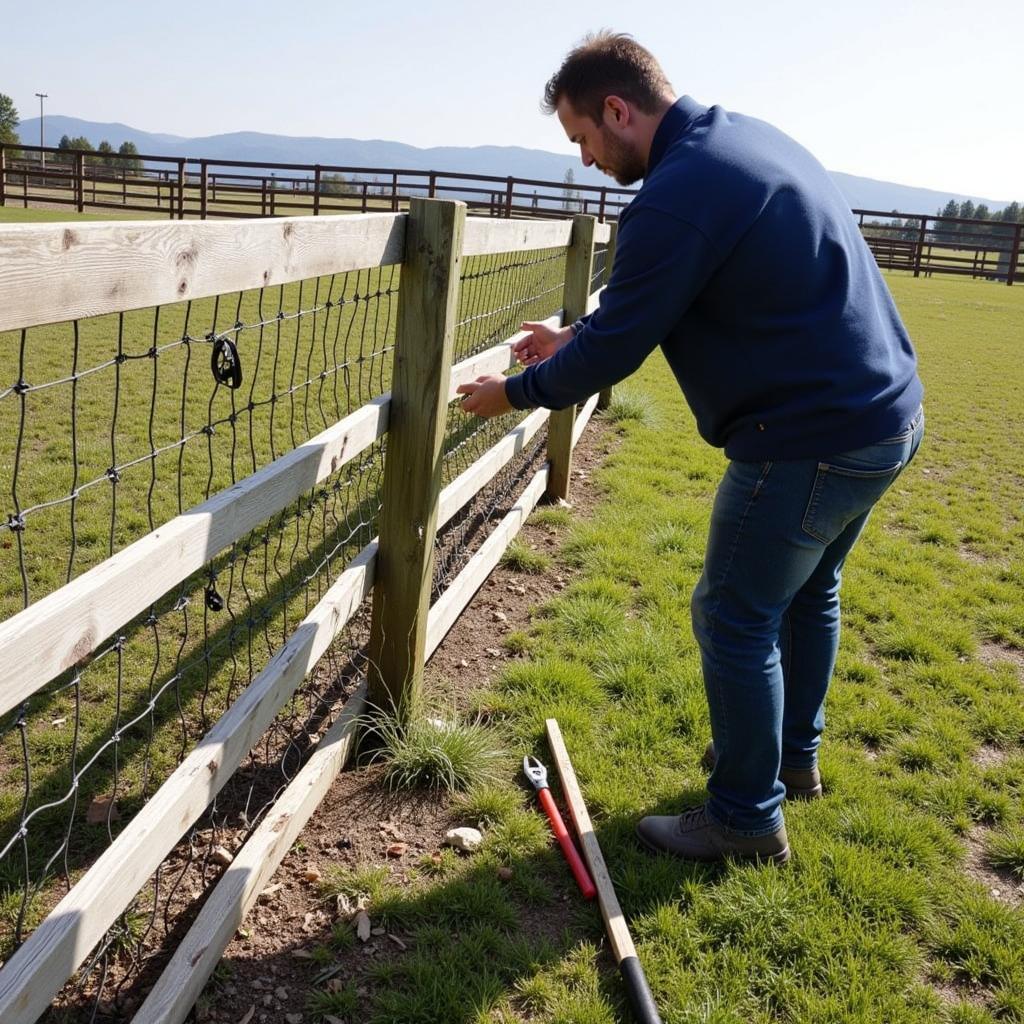A Non-climb Horse Fence 60 In. X 200 Ft offers a reliable and safe enclosure for your equine companions. Choosing the right fence is crucial for containing your horses, ensuring their safety, and maintaining the aesthetics of your property. This comprehensive guide delves into the world of non-climb horse fencing, specifically focusing on the 60-inch by 200-foot option, providing you with the knowledge you need to make an informed decision.
Understanding Non-Climb Horse Fence Options
When it comes to horse fencing, safety and security are paramount. Non-climb designs are specifically engineered to prevent horses from getting legs caught or attempting to climb over, minimizing the risk of injury. Several factors contribute to the “non-climb” aspect, including the materials used, the mesh size, and the overall construction. Popular options include no-climb wire mesh, vinyl fencing, and wood board fences designed with narrow gaps.
Choosing the Right Height and Length: 60 in. x 200 ft
A 60-inch high fence is a standard height recommended for most horse breeds, providing adequate containment while deterring jumping. A 200-foot length is suitable for enclosing a substantial area, ideal for pastures or paddocks. However, the precise dimensions you need will depend on the size and shape of the area you wish to enclose, the number of horses you have, and their individual temperaments.
Materials and Durability: Key Considerations for a Non-Climb Horse Fence 60 in. x 200 ft
The materials used in your horse fence significantly impact its durability, longevity, and effectiveness. High-tensile wire mesh is a popular choice due to its strength and resistance to weathering. Vinyl fencing offers a low-maintenance alternative, while wood provides a classic, aesthetically pleasing option. Consider the climate, potential exposure to harsh weather, and the overall maintenance requirements when selecting your fence material.
Wire Mesh: The Workhorse of Horse Fencing
High-tensile wire mesh, often coated with zinc or other protective materials, stands up to the rigors of horse containment. The small mesh size prevents hooves from getting caught, creating a safe and secure barrier.
Installation Best Practices for Your Non-Climb Horse Fence
Proper installation is essential for ensuring the effectiveness and longevity of your non-climb horse fence. This involves setting sturdy posts, properly tensioning the wire mesh (if applicable), and ensuring a level and secure perimeter.
Secure Posts: The Foundation of a Strong Fence
Posts should be set at appropriate intervals and deeply embedded in the ground to provide stability. Concrete footings are often recommended for added strength, especially in areas with challenging soil conditions.
“A well-installed fence is a safe fence,” says renowned equine veterinarian Dr. Emily Carter. “Proper post setting is the key to a stable and secure enclosure that will stand the test of time.”
Maintenance and Care: Keeping Your Fence in Top Condition
Regular maintenance is essential for prolonging the life of your non-climb horse fence. This includes inspecting the fence for damage, tightening loose wires, and addressing any wear and tear promptly.
Regular Inspections: Catching Problems Early
Inspecting your fence regularly can help you identify and address potential issues before they become major problems. Look for loose wires, broken boards, or any signs of damage that could compromise the fence’s integrity.
 Horse Fence Maintenance Inspection
Horse Fence Maintenance Inspection
Conclusion: Investing in a Secure Future for Your Horses with a Non-Climb Horse Fence 60 in. x 200 ft
A non-climb horse fence 60 in. x 200 ft represents a significant investment in the safety and security of your horses. By choosing the right materials, installing the fence correctly, and performing regular maintenance, you can ensure a safe and contained environment for your equine companions for years to come.
FAQ
- What is the best type of non-climb horse fence?
- How do I calculate the amount of fencing I need?
- What are the installation requirements for a 60-inch horse fence?
- How do I maintain my non-climb horse fence?
- What is the average lifespan of a non-climb horse fence?
- What are the benefits of a no-climb horse fence over other types?
- Can a no-climb fence contain other livestock as well?
For further assistance, contact us at Phone Number: 0772127271, Email: [email protected] or visit us at QGM2+WX2, Vị Trung, Vị Thuỷ, Hậu Giang, Việt Nam. We have a 24/7 customer service team.